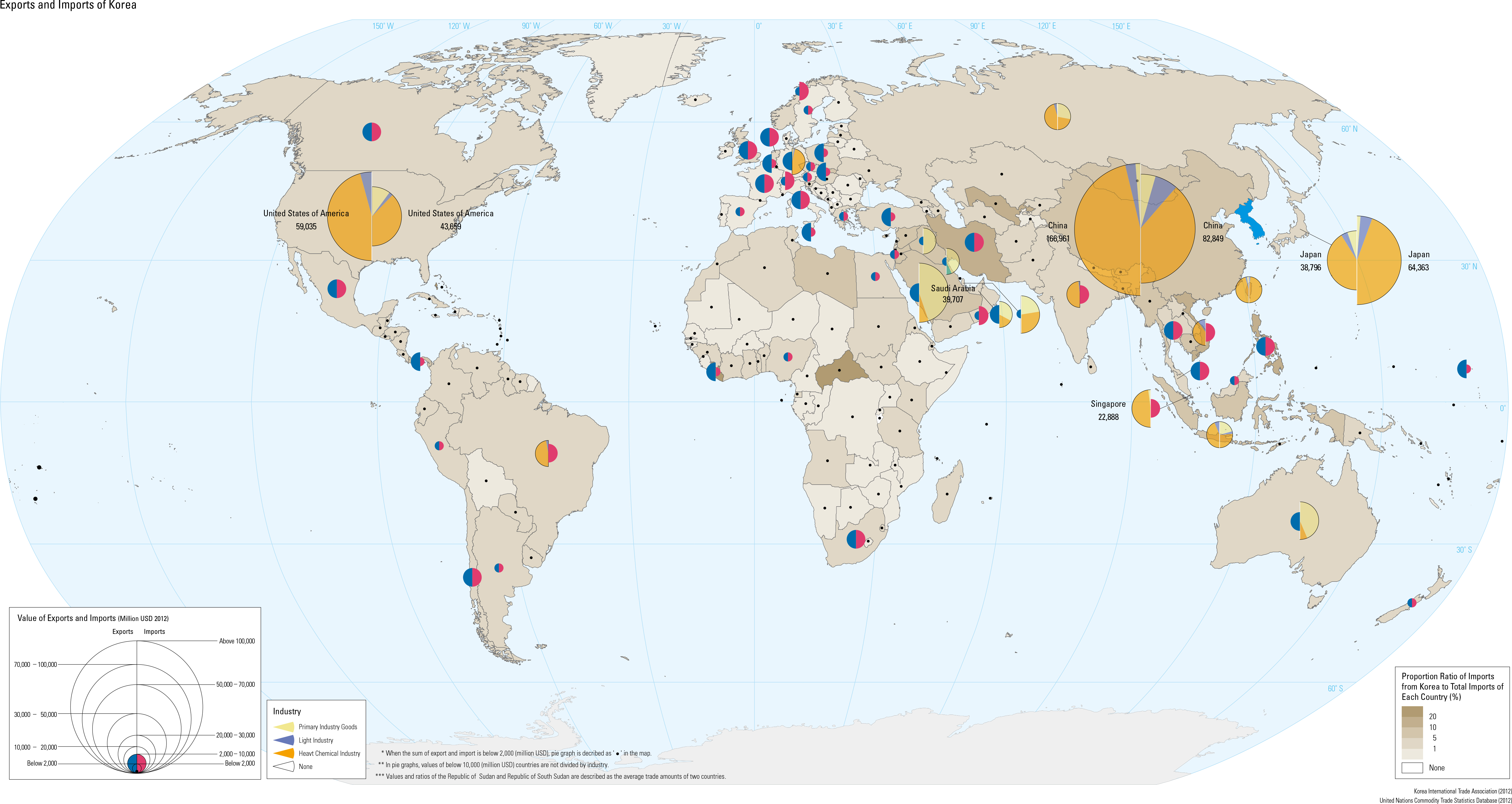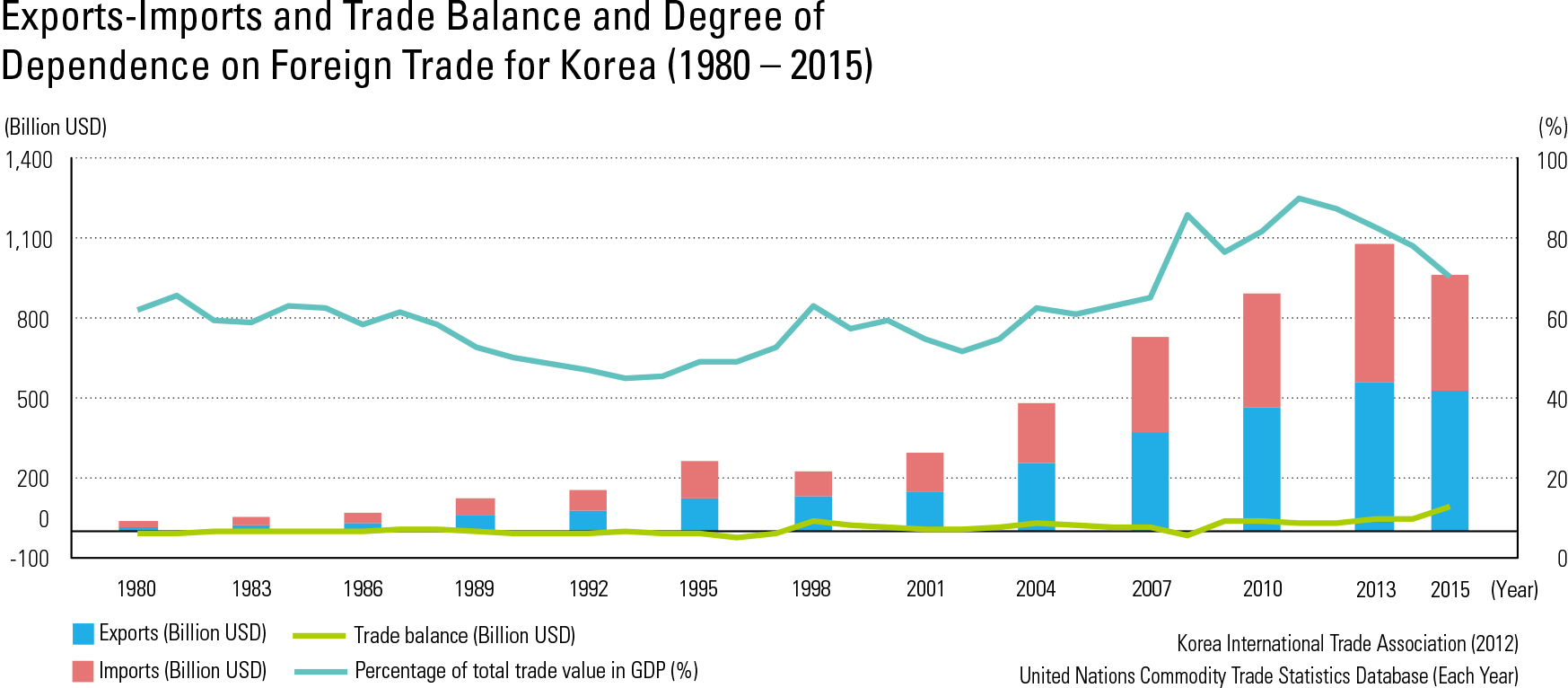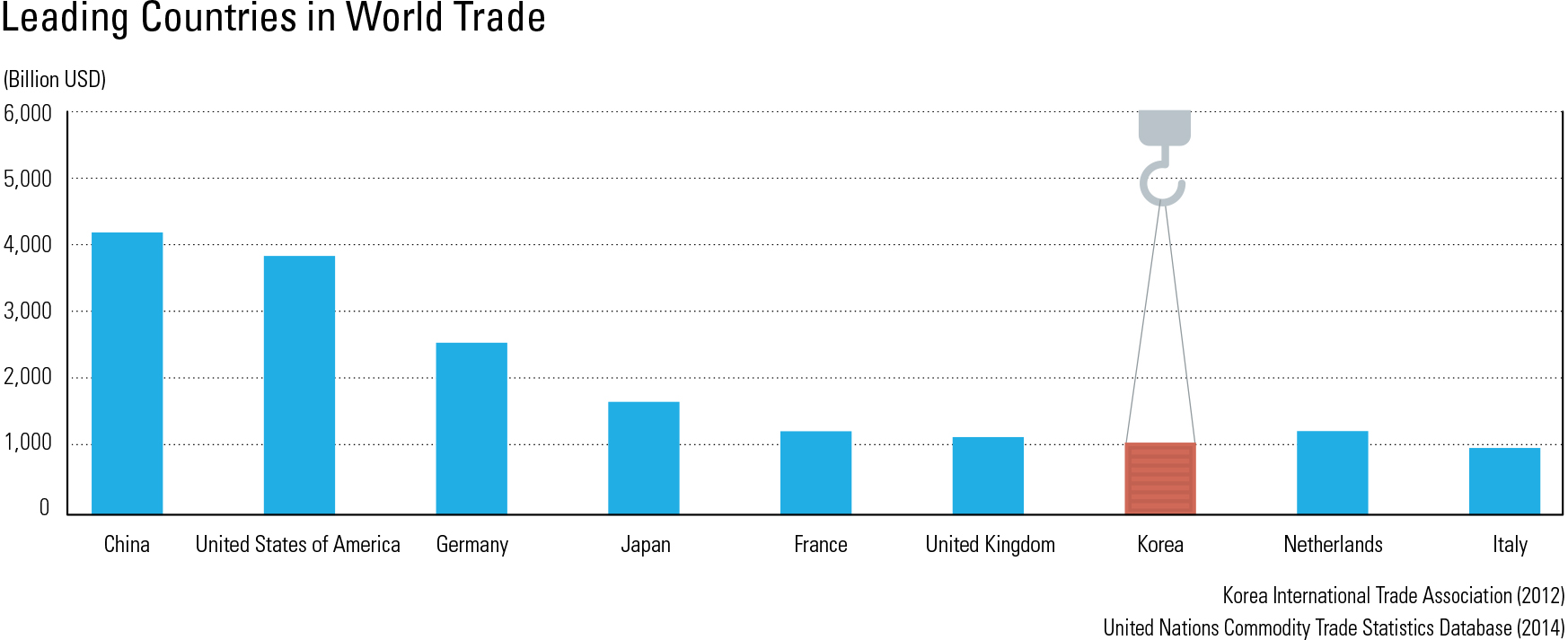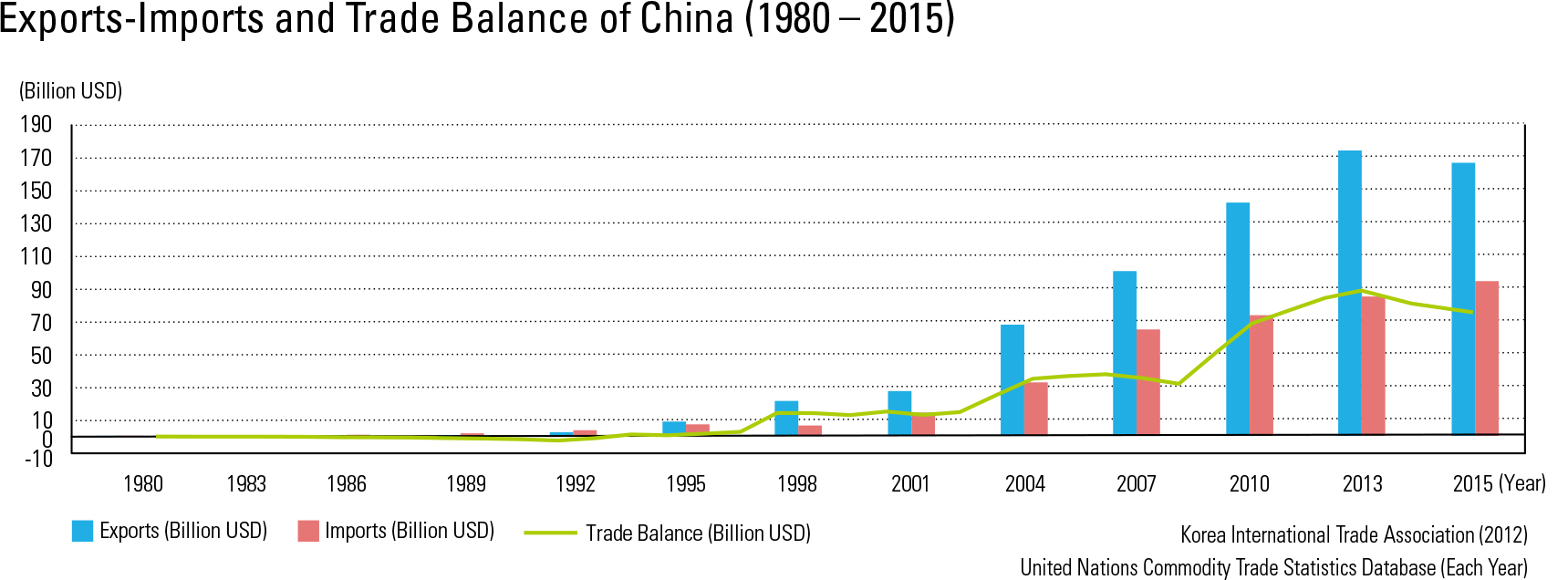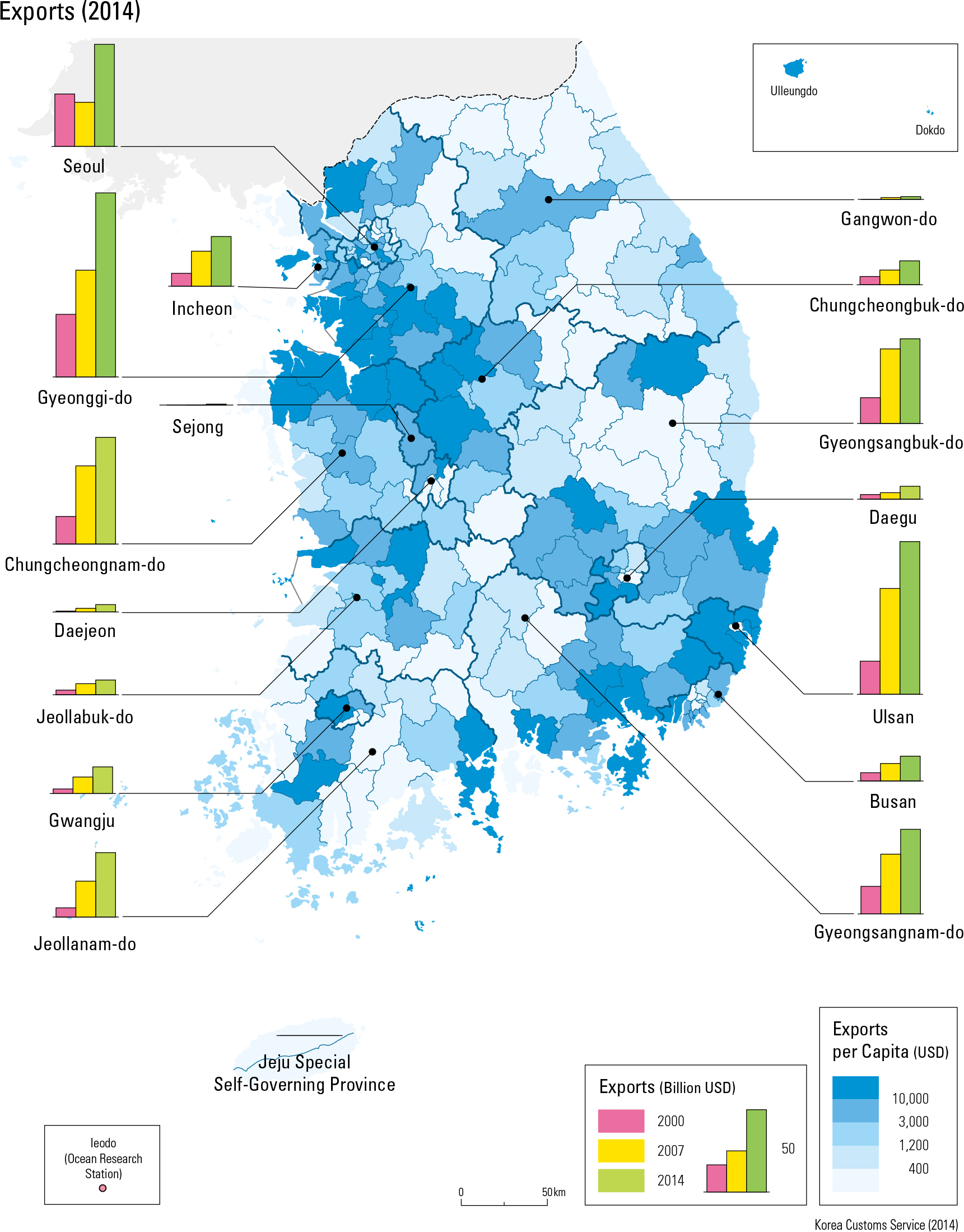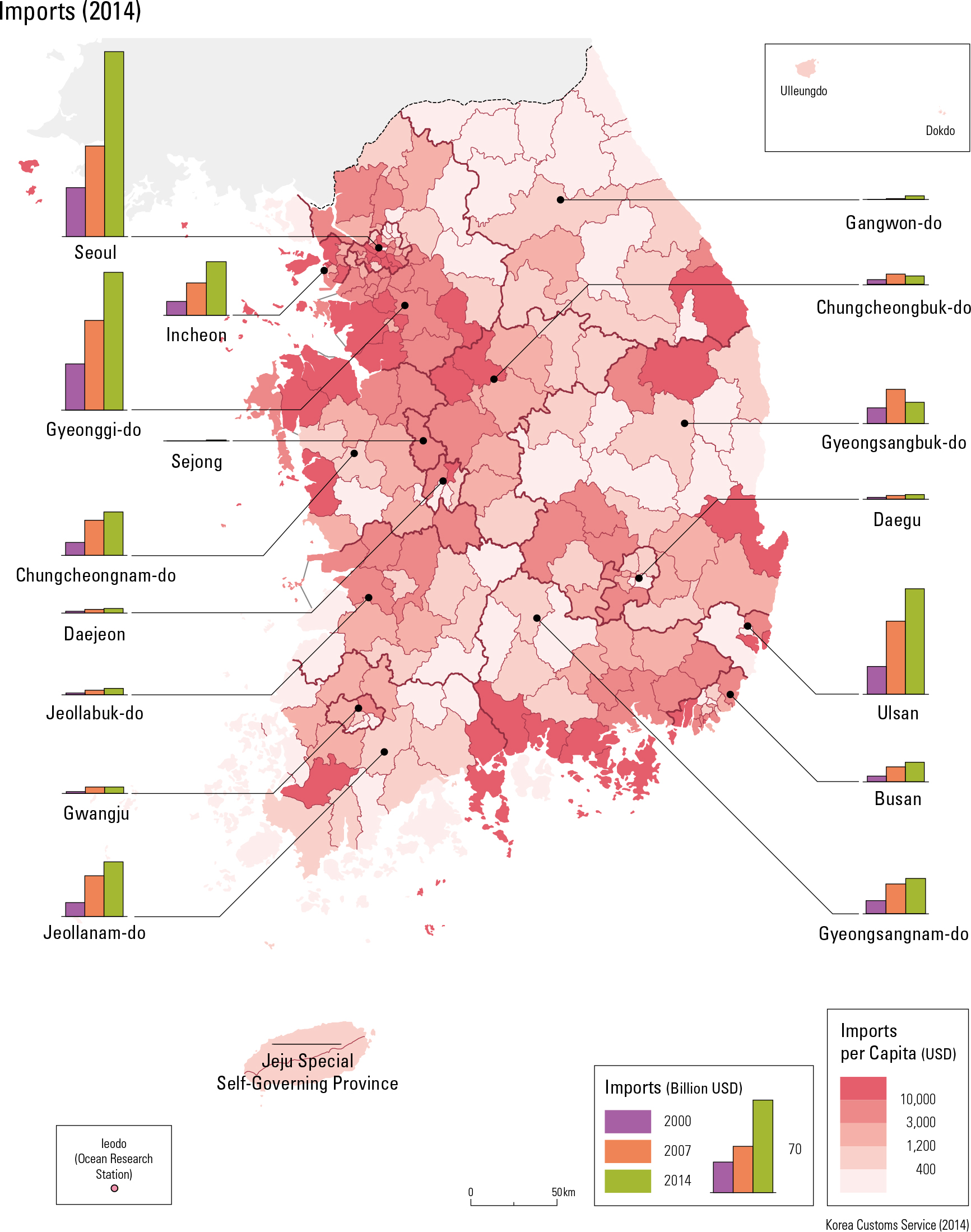English III
Since the 1960s, the rapid growth of international trade has played a crucial role in the economic growth of Korea. By 2012, the country’s international trade volume had exceeded 1 trillion USD, and in 2013, it reached US$ 1.0752 trillion (export: $559,6 billion, import: $551.5 billion). In particular, the foreign trade dependency initiated by the export-led growth strategy of the 1960s maintained a steady increase (to 40%) through the mid- to late-1990s, and continued to increase to the present level of 82.4% by 2013. In terms of international trading, the highest volume of exports was to China, followed by the United States, Japan, Singapore, and Vietnam. Meanwhile, China was also the country from which Korea received the most imports, followed by Japan, the United States, and Saudi Arabia. In particular, China has been Korea’s most important trading partner since 2007. The analyses of international trading activities by region reveal that Gyeonggi-do (19.5%) had the most export volume in 2014, followed by Ulsan (16.1%), Chungcheongnam-do (11.4%), Seoul (10.9%), and Gyeongsangbuk-do (9.0%). On the other hand, Seoul (26.7%) had the most import volume in 2014, followed by Gyeonggi- do (19.9%), Ulsan (15.2%), Jeollanam-do (8.0%), and Incheon (7.7%). In particular, the highest per capita export volume in US dollars was from Asan (US$ 141,216), followed by Buk-gu in Ulsan (US$111,162), Ulju-gun in Ulsan (US$ 107,019), Yeosu-si (US$104,627), and Dong-gu in Ulsan (US$100,163). The highest per capital import in US dollars was to Ulju-gun in Ulsan at US$165,866, followed by Jung-gu in Seoul (US$162,855), Seosan-si (US$127,772), Yeosu-si (US$113,388), and Nam-gu in Ulsan (US$104,069)
page_2 |
